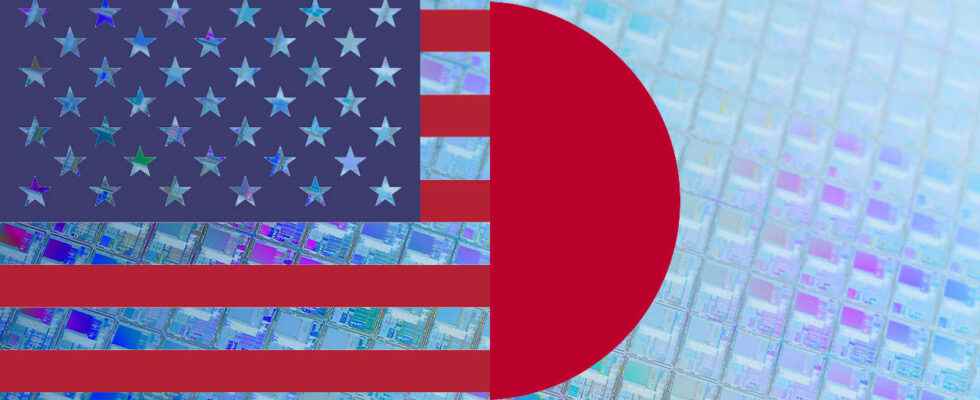The United States and Japan are forming an alliance around the production of 2nm semiconductors. Reducing chip etching fineness is not only an economic issue, but it is also a technological and geopolitical issue around sovereignty. And the two powers are more or less in the same situation: they let production go to Asia. In 1990, the USA produced 37% of the world’s semiconductors and Japan 50%, shares which have fallen today to 12% and 10%! The big winners today are Taiwan (50%) and South Korea (10%).
It is therefore a reconquest to be carried out by the USA and Japan and not only in terms of production volumes. Because if IBM was the first to etch chips in 2 nm experimentally, it will still take time for the global industry to really master this technology. The first to have 2 nm on its roadmap is obviously the Taiwanese TSMC, which is in the process of creating its own processes and above all, its own supply chain.
It is in this area in particular that the Japanese-American partnership is important for the two actors: it is a question of putting in resonance the industries of Japan – one of the leaders in production machines, wafers and chemical products – with the Americans.
Limit reliance on Taiwan to protect against China
With more than 50% of the world’s volume of semiconductors, including 92% (!) of the most advanced nodes (7 nm and less), Taiwan is THE world champion in the field thanks to its champion TSMC – and other minor players like UMC. It’s not that Taiwan is an enemy, far from it. But the island is at the center of the attention of the Chinese government which would like to take control of this small republic.
The USA and Japan want to reduce their dependence, especially in the event of an attack or takeover of Taiwan by China. And since TSMC is reluctant to build its most advanced factories off the island, it must develop a secondary source of supply just in case.
Read also: China poaches Taiwanese semiconductor engineers (2021)
Even if the status quo is maintained, Taiwan remains an island close to China not only geographically, but also culturally, with the majority of residents identifying ethnically as Han and a small minority even being pro-Han. Chinese. Biases that lead to the risk of information leakage, or even outright espionage. The Taiwanese government is well aware of this problem and constantly faces attempts at intellectual and industrial plunder from Beijing.
The visit of Koichi Haguida, Japanese Minister of Economy, Trade and Industry to the IBM plant which engraved the first chip in 2 nm (Albany, NY) is only the first stone in this search for an industrial agreement between the two countries. It remains to be seen what the contours of this agreement will be, but one thing is certain: given the stakes and the Chinese “risk”, the two countries have no other choice but to agree.
Sources: Nikkei Japan via Tom’s Hardware USA
